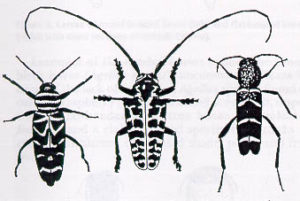 Many insects feed and make their homes in the bark, trunks and branches of shade trees and shrubs in Texas. Some of the most damaging are those that bore into the bark and wood of your trees. Bark beetles and insect borers belong to several different insect groups including a variety of beetles, moths and horntail wasps.
Many insects feed and make their homes in the bark, trunks and branches of shade trees and shrubs in Texas. Some of the most damaging are those that bore into the bark and wood of your trees. Bark beetles and insect borers belong to several different insect groups including a variety of beetles, moths and horntail wasps.
Most insect borers are attracted to weakened, damaged, dying or dead plants. These are referred to as “secondary invaders” because they attack only after a plant has been weakened by another stress. While other wood-boring insects that attack healthy trees and shrubs are called “primary invaders.” Primary invaders may eventually kill trees.
Borer infestations often go unnoticed until plants or parts of plants begin to die or show external signs of damage. Wood-boring insects often produce sawdust-like frass. Their holes are normally round, oval or semicircular and are found in a random pattern on the plant.
Many borers damage plants by tunneling through the inner bark layer into the sapwood that transports nutrients and water to the leaves. These insects are called phloem feeders. When the cambium layer is completely girdled the plant eventually dies above or beyond the damage site. Partial girdling reduces plant growth and vigor above the site of attack. On occasion, tunneling makes the tree weak, causing limbs and branches to fall.
If you suspect that you have a tree suffering from an attack of boring beetles or other wood boring insects, call L & A Tree Service at 903-357-9292 or contact us now for assistance.
